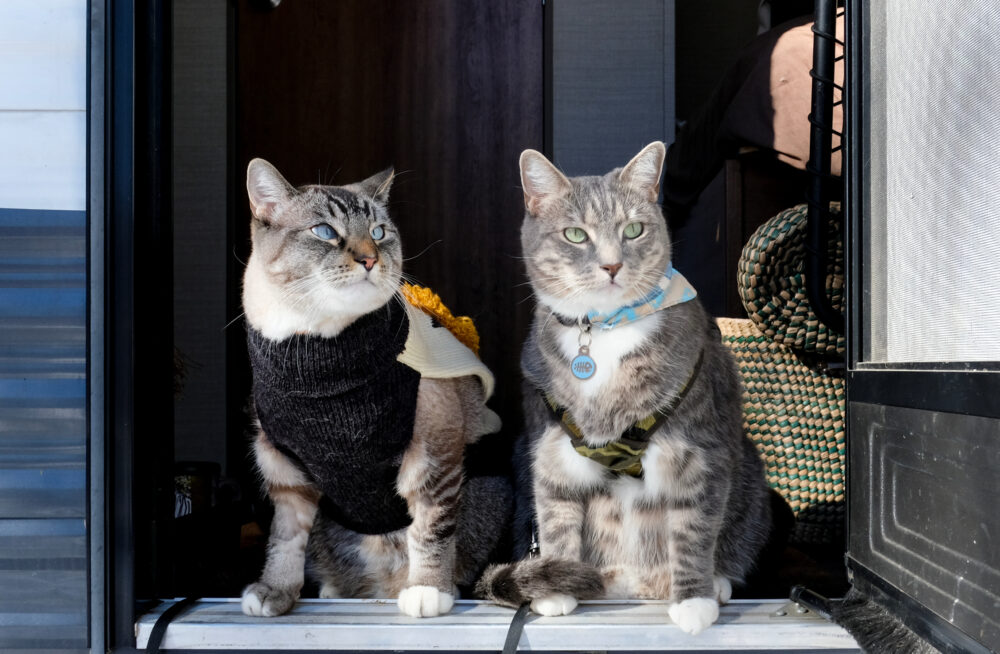
RV Pet Area Insulation Tips & Tricks To Keep Your Furry Friends Warm
For many RV enthusiasts, traveling with pets is one of life’s greatest joys. As the seasons change and the temperatures dip, it’s crucial to ensure our furry friends are as comfortable and warm as we are.
Just as humans need adequate insulation from the cold, our pets, especially those with shorter coats, require a warm refuge, especially during harsh winter months. In this guide, we’ll delve into the various ways you can insulate your RV pet areas to ensure they’re warm, cozy, and safe.
1. Understand your pet’s needs
Before diving into insulation techniques, it’s vital to understand the specific needs of your pet. Different animals have different temperature tolerances. While a Siberian Husky might enjoy cooler temperatures, a Chihuahua will seek warmth. Always be observant. If your pet is shivering, seeking shelter, or showing signs of discomfort, it might be time to ramp up the insulation.
2. Start with the floor
Cold often seeps in from the ground, making the RV floor one of the chilliest parts. Here’s how to insulate it:
- Thermal mats: These mats reflect body heat, ensuring your pet remains warm. They’re lightweight, easy to clean, and portable.
- Carpeting: A carpeted area not only provides warmth but also offers a comfortable spot for pets to rest.
- Raised pet beds: Elevating your pet’s bed off the floor can significantly reduce the cold they feel. Opt for beds with sturdy frames and plush bedding.
3. Use insulated curtains and drapes
Cold can infiltrate through windows. Insulated curtains help in retaining heat and blocking cold drafts:
- Thermal curtains: These curtains have a layer of thermal insulation, which prevents cold air from entering and retains warmth inside.
- DIY insulation: Attach a layer of bubble wrap or reflective foil insulation to the back of your regular curtains for added insulation.
4. Draft guards
Draft guards or draft stoppers are essential for preventing cold air from sneaking in through gaps beneath doors or windows:
- Commercial draft guards: Readily available and come in various designs, including pet-themed ones.
- DIY draft guards: Make your own using old fabric filled with sand or rice.
5. Insulate pet crates and houses
If your pet has a designated crate or mini-house inside the RV, ensure it’s insulated.
- Crate covers: Many pet stores offer insulated covers that fit over crates. They block drafts, trap heat, and provide darkness.
- DIY insulation: Use blankets, quilts, or old sweaters to wrap the crate. Just ensure your pet still has proper ventilation.
6. Thermal pads and hot water bottles
Warmth can be provided actively:
- Heating pads: There are pet-safe heating pads available that offer continuous, gentle warmth.
- Hot water bottles: Fill a bottle with warm water and wrap it in a towel, placing it next to your pet’s resting area.
7. Wall insulation
While re-insulating RV walls can be a significant project, it ensures overall warmth:
- Spray foam: A popular choice for RV insulation. It expands and fills gaps, providing a high insulation value.
- Reflective foil: This can be placed on walls to reflect heat back into the RV.
8. Regularly check for drafts
Periodically check for cold drafts, especially after parking in a new location. Small gaps or cracks can appear over time and become sources of cold air infiltration.
9. Portable heaters
A portable heater can provide an additional heat source:
- Safety first: Ensure the heater is pet-safe with features like tip-over protection and automatic shut-off.
- Placement: Place heaters where pets can’t knock them over or get too close to avoid burns.
10. Warm clothing
While this isn’t directly related to RV insulation, donning your pet in a warm sweater or coat can provide them with additional warmth, especially during outings in the winter.
Conclusion
Traveling with pets in an RV during the colder months requires preparation and understanding. Proper insulation ensures that every family member, furry ones included, is safe, comfortable, and warm. With the right measures in place, you can create a cozy winter haven for your pets, ensuring their well-being and your peace of mind.
As always, continuously monitor your pets for signs of discomfort and make adjustments as necessary. Your furry friends rely on you for their comfort, so invest time and effort into making their RV space as warm and inviting as possible. After all, a warm pet is a happy pet!



